Archived Storm Damage Blog Posts
Battling the Elements: How to Prepare for High Winds and Protect Your Home
6/18/2023 (Permalink)
High winds can be a force of nature that pose significant risks to both personal safety and property. Preparing for high winds is crucial to mitigate potential damage and ensure your well-being during such weather events. In this blog post, we will discuss essential tips and strategies to help you effectively prepare for high winds, empowering you to protect yourself, your home, and your surroundings.
Stay Informed and Monitor Weather Updates
Stay informed about weather conditions by regularly monitoring weather forecasts and updates from reliable sources. Pay attention to alerts and warnings related to high winds issued by meteorological agencies. Being well-informed allows you to take timely action and make necessary preparations.
Secure Outdoor Objects
Inspect your surroundings and identify objects that may become projectiles in high winds. Secure or store away outdoor furniture, umbrellas, grills, garden tools, and other loose items that could be picked up and tossed around. Trim or remove weak tree branches that could potentially break and cause damage.
Reinforce Doors and Windows
Ensure that your doors and windows are properly reinforced to withstand high winds. Install storm shutters or use impact-resistant window film to protect glass surfaces from shattering. Reinforce doors with sturdy deadbolts and install heavy-duty hinges to prevent them from being blown open.
Strengthen Roofing and Siding
Regularly inspect your roof and siding to identify any loose or damaged areas. Repair or replace loose shingles, tiles, or panels to ensure they are securely fastened. Consider reinforcing vulnerable areas with metal strapping or clips. Reinforce garage doors to prevent them from collapsing under high wind pressure. If you have outdoor structures such as sheds, gazebos, or playsets, ensure they are properly anchored to the ground. Use ground anchors or tie-downs to secure them firmly. Reinforce connections and structural components to improve their resistance to high winds.
Trim and Maintain Trees and Vegetation
Maintain trees and vegetation around your property to reduce the risk of falling branches and uprooted trees during high winds. Regularly trim branches that are close to your home or power lines. Remove dead or weak trees that may pose a significant hazard during severe weather events.
Prepare an Emergency Kit
Assemble an emergency kit that includes essential supplies to sustain you and your family in the event of high winds or related power outages. Include items such as non-perishable food, drinking water, flashlights, batteries, a first aid kit, blankets, and a portable weather radio. Ensure the kit is easily accessible and kept in a secure location.
Create an Evacuation Plan
Develop an evacuation plan in case high winds escalate to a severe level or if local authorities issue evacuation orders. Identify evacuation routes, establish a meeting point for your family, and ensure everyone understands the plan. Keep important documents and contact information readily available to take with you if you need to evacuate.
Preparing for high winds requires proactive measures and careful planning to protect yourself and your property. By staying informed, securing outdoor objects, reinforcing doors and windows, strengthening roofing and siding, anchoring outdoor structures, maintaining trees and vegetation, preparing an emergency kit, and creating an evacuation plan, you can enhance your readiness and safety during high-wind events. Remember, personal safety should always be the top priority. If the situation becomes severe, follow the guidance of local authorities and seek shelter in designated areas.
Flood Insurance - Do I Really Need It?
1/4/2023 (Permalink)
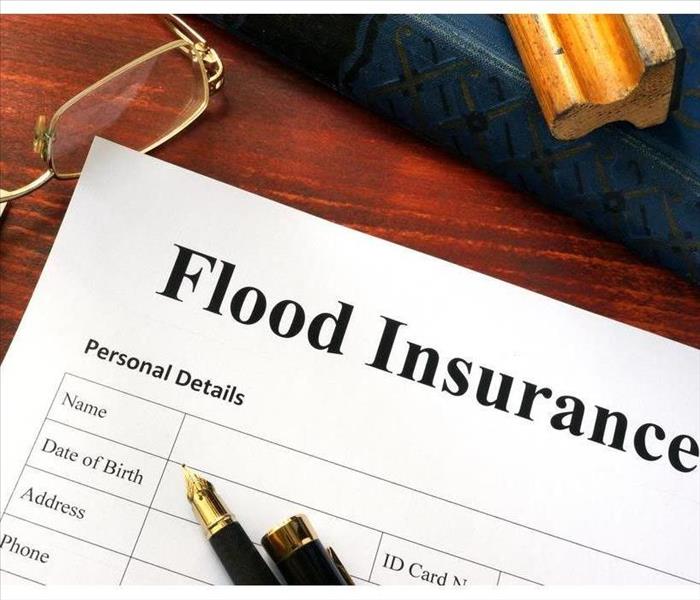 Flood insurance is an important part of your overall financial strategy.
Flood insurance is an important part of your overall financial strategy.
If you live in any part of the world that regularly experiences flooding, then flood insurance is a necessity. Floods can be devastating to homes and lives, but they are not always covered by home insurance policies. If you plan on buying a home, or if you already have one and want to make sure that it is properly protected in case of flooding, then flood insurance is something you will need to purchase.
Flood Facts
You’re probably thinking to yourself, “I don't live near any rivers or lakes. I don't live in a flood zone. I don't need flood insurance." But you might be surprised to learn that floods are the most common type of natural disaster in the U.S., killing more people than any other type of natural disaster and causing more property damage than tornadoes, hurricanes and earthquakes combined. In fact, flooding is the leading cause of catastrophic damage to homes according to FEMA; over 30% of all flood claims come from homes with no history of previous flooding incidents!
The truth is most homeowners underestimate their risk for flooding because they simply don’t think it could happen to them—until it does.
How Can You Tell If You Are in a Flood Zone?
There are a few simple ways to find out if you live in a flood zone. If your home is located in a flood plain, or if you have a federally backed mortgage loan and it's located in an area that's designated as high risk for flooding, then yes—you should purchase flood insurance.
A residential property is considered to be at risk of flooding if it has been mapped by FEMA as being within the 100-year floodplain. The 100-year floodplain is the area of land where there’s a 1% chance of flooding every year.
If you have any questions about whether or not your home falls into one of these categories, contact your local FEMA office or county assessor’s office to inquire further about what type of insurance coverage would best suit your needs
Types of Flood Insurance
The first step to determining whether or not you need flood insurance is to understand what it is. Flood insurance policies are either federally subsidized or privately issued and can be broken down into two main categories:
1. National Flood Insurance Program (NFIP) - This type of policy is issued through the Federal Emergency Management Agency (FEMA), and covers up to $250,000 in damages. They're good for flooding, fire and other disasters that meet their criteria (more on those later). The premium you pay will depend on where you live and how much coverage you want; the higher your premium, the more likely your property will be covered if something happens. If you don't have flood insurance but are at risk for floods due to river overflow or tidal surge during a storm event like Hurricane Matthew, then this may be a good option for protecting yourself from disaster losses even though it's not mandatory.
2. Flood Insurance Policy (FIP) - These policies are private-issued policies specifically tailored toward homeowners who want protection against damage caused by rising water levels during extreme weather events such as hurricanes or tsunamis; they tend also include coverage against earthquakes because many earthquakes cause flooding as well! While NFIP was designed solely around catastrophic events like major hurricanes hitting land areas without warning offshore islands nearby would still need some kind of protection plan in place before any natural disaster strikes them unexpectedly so having both options available lets people choose which one works best depending on their specific needs—but there's no reason why someone couldn't choose both types too just because they wanted more peace-of-mind about being prepared ahead of time when possible... unless there wasn't enough money left over after paying all those other bills each month!
Cost-effective Flood Insurance
If you own a home and live in a flood zone, it can be hard to know whether or not you need the extra coverage. The good news is that most insurance companies will give you the option to purchase a policy for less than $300 annually. If you're worried about rising costs due to climate change, consider adding a deductible of 10% or more. This will lower your premiums but still cover some of your losses if flooding occurs. If you already have homeowners' insurance, talk with an agent who specializes in flood protection and/or check out our state-by-state guide below for more details on what's available where you live!
The more you know about flood insurance the better you'll be able to protect yourself and your family.
If you live in a flood-prone area, flood insurance can be an important part of your overall financial strategy. It's also a good idea for anyone who has a federally backed mortgage or whose local government requires that they carry flood insurance on their property.
While it's not mandatory, many homeowners are surprised to learn that the majority of people with mortgages do not have a policy in place. If you don't have one, it's likely because you've never thought about it before—but now is the perfect time to start thinking about how having this coverage could protect both yourself and your home from significant damage if disaster strikes.
Flood insurance is an important part of your overall financial strategy. It can protect you from having to pay for damage that could result from flooding, which can be substantial and life-changing. Knowing more about flood insurance will help you make an informed decision about whether it's right for you and your family.
Prevent Your Office Roof From Suffering Leaks
8/30/2022 (Permalink)
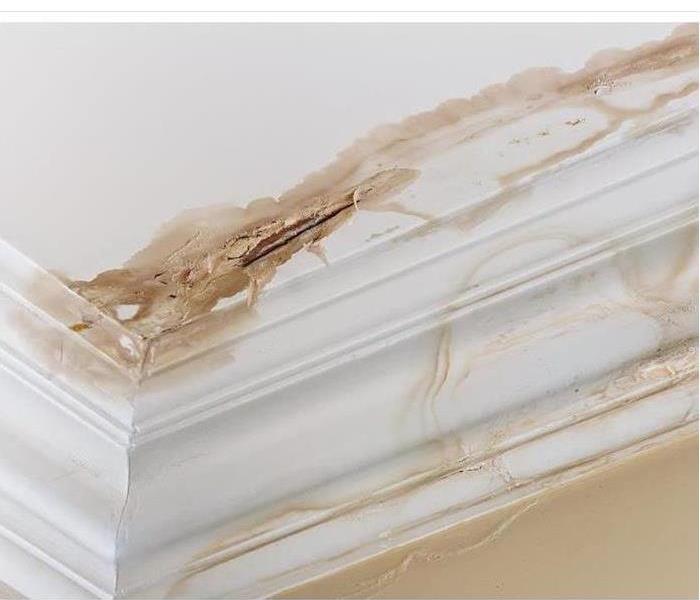 No business welcomes a roof leak.
No business welcomes a roof leak.
No business welcomes a roof leak. Besides soaked equipment, the inconvenience of working space rearrangements, and overall stress, you become suddenly burdened with the cost of unexpected repairs. Luckily, you can make your office in Northwest Las Vegas, NV, less likely to suffer roof-related maladies through the implementation of some easy measures.
Damage Caused by Leaks
Should leakage afflict your building, a few difficulties you can expect include:
- Wasted energy and higher utility bills
- Mold and mildew
- Compromised electrical wiring
- Wood deterioration
Fissures commonly develop from improper maintenance, rainstorms, or poor installation. Note also that roofs need to be replaced every twenty or thirty years and older coverings are more susceptible. Become proactive and curb your chances of suffering a roof leak and suddenly needing a storm repair specialist.
Preventing Leaks
Upkeep remains key to avoiding disasters. Remember that while you can always perform visual inspections yourself, there’s no substitute for the skills of a trained expert. Therefore, have a certified professional perform a complete analysis and don’t forget to schedule follow-ups as time moves on. Request that your building’s ventilation be checked along with gutters and downspouts.
Regularly sweep away debris, as stuffed drains cause harmful rainwater to flow beneath shingles. Should you ever notice torn or missing tiles, have them replaced immediately. The longer you wait, the greater the odds of problems spreading.
Violent weather is a primary culprit of roof degradation. Although wind damage can never be eliminated entirely, moving trees and bushes away from your place of business reduces potential fallout. The reason for this is that leaves and branches cause algae and rot, leading to destructive moisture. Re-landscaping may seem an unappealing option, but the price will inevitably prove lower than an extensive building restoration.
Simple precautions can help prevent a disruptive roof leak. Rather than waiting for complications to occur and then rushing to remedy the situation, invest in proper maintenance.
What To Expect After Your Building is Damaged During a Flood
8/30/2022 (Permalink)
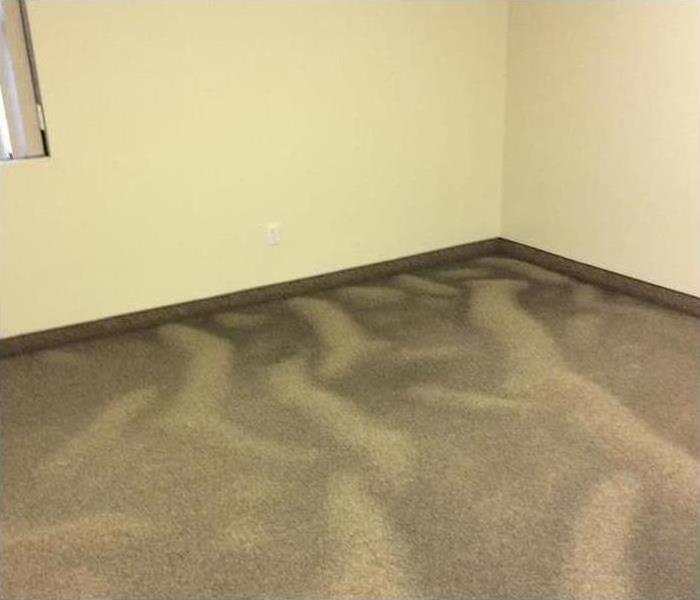 Flood damage at an office in Las Vegas, NV.
Flood damage at an office in Las Vegas, NV.
This Process Includes Three Important Stages
If you have experienced a flood in Las Vegas, NV, your building has likely been damaged in some way. A flood cleanup company can help you return it to a safe and comfortable environment.
1. Inspection
The first thing that the emergency restoration company will do is inspect the building. This is necessary so that they know how to proceed. They will check each area of the building to determine what was affected as well as the type and severity of the damage. Once this has been done, they can start taking steps toward repairing the building.
2. Mitigation
After the inspection, mitigation can be done. This stage is usually completed much more quickly than restoration and involves taking action to reduce further damage. Excessive flood water inside the building will be removed to prevent mold growth and damage to building materials. Absorbent items such as carpeting, drywall and insulation may need to be torn out so they can be replaced. Dehumidifiers may be used to dry the building quickly.
3. Restoration
The final stage of the process is restoration. This is when all of the repairs are done. Depending on how badly the building was damaged, some areas may need major work. If the structure of the building was affected, some rooms may need to be rebuilt entirely. The flood cleanup company will also replace any materials that were removed. They may also perform smaller tasks, such as repainting the walls or replacing windows that were damaged in the storm. Furniture or other belongings that were affected by the flood may be restored at this time as well.
Water damage from a flood can cause a variety of problems in your building, from corrosion to mold, so it is important to have an inspection, mitigation and restoration done by a professional flood cleanup company as soon as possible. Starting the process sooner will also allow you to get back to work more quickly.
What Damages a Solar Panel?
7/23/2022 (Permalink)
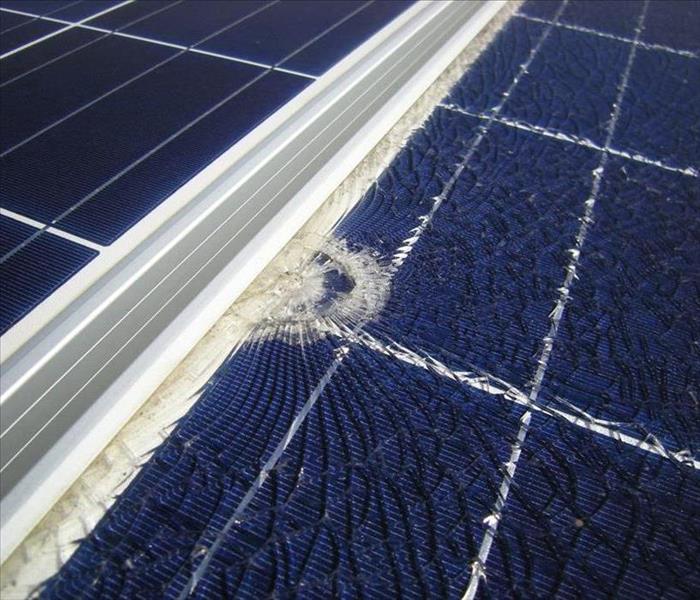 Sola panel damaged
Sola panel damaged
What Causes Solar Panel Damage?
People in Las Vegas, NV with solar panels should feel confident that their investment should last and they won’t have to worry about panel damage. While the weather doesn’t always cooperate with our wishes, these renewable energy systems are designed to withstand a fair amount of what Mother Nature throws their way.
Panel Durability
Although the many photovoltaic cells that make up a panel are fragile, they are protected by a durable frame and tempered glass. Similar to cellphone screens, even if they shatter or crack, they maintain their form. The glass used is tested to provide a protective layer from hail, wind, and severe storms, as well as hold up to excess weight on them.
Common Culprits
Solar panels are designed to last up to 30 years, and may even continue working at a lower capacity after that, but they aren’t 100% resistant to the effects of nature. When general roof damage occurs, there may be a chance that there is also panel damage. The most common causes of damage include:
Falling debris – Dust, leaves and twigs may create tiny scratches that can eventually block some of the cells from absorbing sunlight. Larger branches falling have the potential to create large cracks. Maintaining nearby trees can help deter these problems.
Hail – Panels are designed to withstand hail. For people who live in areas prone to hail storms, or freak storms with larger hail, scratching or cracking can happen. While there isn’t much you can do to prevent hail damage, smaller panels can reduce overall damage.
Rain and snow – As panels age, seals can begin to deteriorate. This may allow moisture to get inside the panel and affect its components. A professional can reseal the panels to help them last as long as they should.
Most people won’t need to worry about panel damage for years to come. A few small steps, like keeping panels free of debris, can easily be added to your spring and fall home maintenance checklist.
Basic Information on Storm Damage and Tax Deductions
4/21/2022 (Permalink)
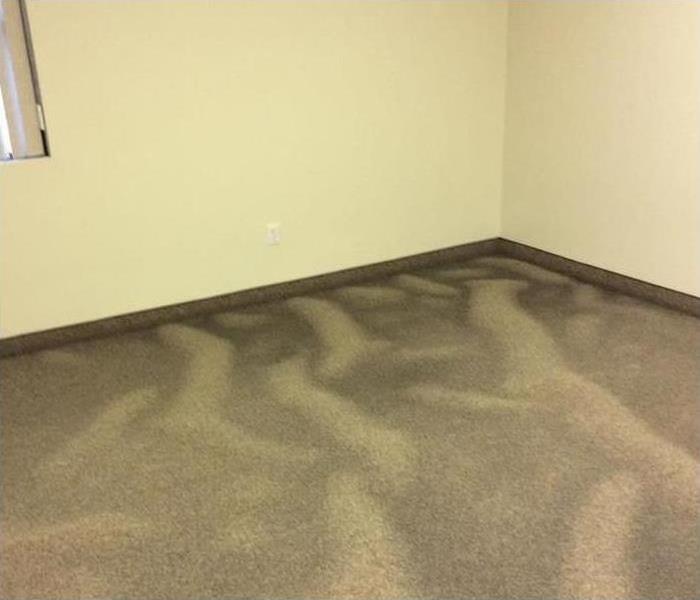 Flood damage at an office in Las Vegas, NV.
Flood damage at an office in Las Vegas, NV.
Storm Damage and Tax Deductions: Basic Information
When your company in Las Vegas, NV, encounters major storm damage, it will likely look at all of its options to save money and survive a devastating event. The strategies and solutions for dealing with a disaster include many possibilities. Perhaps the first is relying on a primary insurance policy that covers damage caused by storms. This can result in claims payments for such things as a damaged roof, saturated contents and destroyed electrical systems.
The next step is often working with a professional storm remediation company in your area. A quality team of technicians can come to your building and perform an efficient restoration of the property. Help also might be available from one surprising source: the taxman.
The Ability To Deduct Storm Damage
Under certain circumstances, your company might be able to write off the expenses related to a storm. Not all losses will be tax-deductible, but the following costs could lower your overall tax liability:
- Expenses that are not paid for by insurance
- Expenses that qualify as losses to your company
- Expenses for restoration services not covered by insurance
- Deductibles you must pay before insurance kicks in
Tax laws are complicated and change frequently. Rules vary in federal, state and local jurisdictions. It is always best to rely on the advice of a tax professional.
The Strength To Recover Quickly
A powerful storm can do a number on your company and disrupt operations as well as cause all sorts of damage. It is best to consider all of your options. The expenses can become overwhelming. Also, when you are in need of restoration services, it is crucial that you partner with a franchise that has a proven track record. This will ensure the work will be done according to the highest industry standards.
Dealing with storm damage can be a trying time for your company. It could require the help of many professionals to recover.
After the Flood: 3 Content Cleaning Tips
3/24/2022 (Permalink)
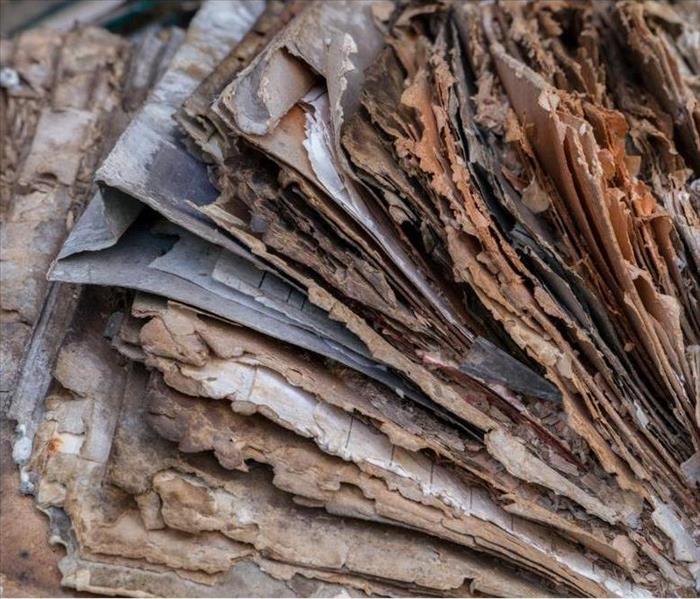 Flooding can cause serious damage to your Fremont Street, NV, home and its contents.
Flooding can cause serious damage to your Fremont Street, NV, home and its contents.
3 Content Cleaning Tips After the Flood
Flooding can cause serious damage to your Fremont Street, NV, home and its contents. After a flood, it can be difficult to know how to salvage items such as photo albums, important documents and your children’s toys. Knowing how to restore these belongings and what is safe to keep for content cleaning can help you save time and money, both of which might be in short supply after serious flooding.
1. Retrieve Items in Safe Areas Only
Not all types of floods are the same, and the grade of water can have a significant impact on your belongings. For example, Flooding caused by a broken sink pipe in your kitchen may be less damaging than one that originated from a broken sewer or flooded toilet. Category 3, or black water, is usually the result of such floods, which may make items more difficult to sanitize and restore. As such, it is wise to avoid retrieving any belongings that have been soaked by contaminated flood water.
2. Lower Humidity in Affected Areas
After flooding, indoor humidity levels can rise considerably. This can affect important paper documents, books and photographs. To prevent curling and warping of paper products, turn off your home’s ventilation systems, open the windows and turn on floor and ceiling fans. This can help reduce humidity until you are able to move these items to a safer area.
3. Ask a Flood Damage Service for Advice
Calling in a flood damage and restoration service to help you with content cleaning may help you feel more confident about the choices you make regarding your damaged items. For example, flood technicians can help you understand the difference between porous items, such as plastic toys and fabrics, and non-porous belongings, like those that are made of metal or glass. Porous items may have to be discarded if they were soaked with contaminated flood water.
Content cleaning can be challenging after flooding affects your Fremont Street, NV, home. Understanding how certain types of floods might affect your belongings can help you make the best decisions possible when it comes to salvaging them.





 24/7 Emergency Service
24/7 Emergency Service




